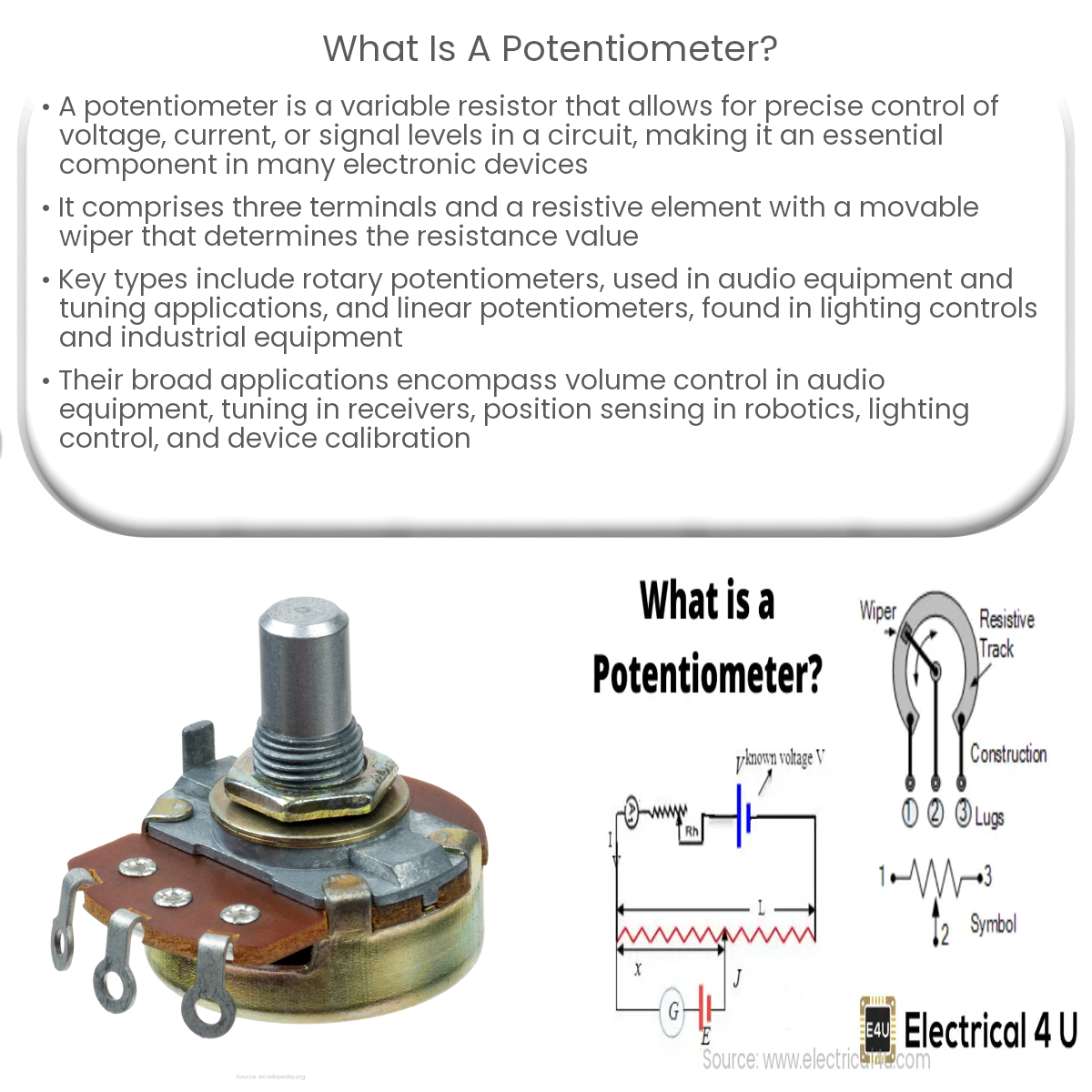A potentiometer is a variable resistor used to control voltage or current in a circuit, often found in audio equipment, lighting control, and robotics.
What is a Potentiometer?
A potentiometer, commonly known as a “pot,” is a type of variable resistor used to control voltage or current in an electrical circuit. It is a three-terminal device with a sliding contact that moves along a resistive element, varying the resistance as it moves. Potentiometers are frequently used in applications where precise control of electrical parameters is required, such as in audio equipment and instrumentation.
Construction and Operation
A potentiometer is typically made up of a resistive track, a wiper, and a mechanical housing. The resistive track is often made from a material like carbon, cermet, or conductive plastic, which provides a consistent resistance along its length. The wiper, a movable contact, slides along the resistive track, creating an adjustable connection between the terminals. As the wiper moves, it changes the ratio of resistance between the input and output terminals, effectively dividing the voltage.
Types of Potentiometers
There are several types of potentiometers, each designed for specific applications:
- Rotary potentiometers: These have a circular resistive track and are adjusted by rotating a knob. They are commonly used for volume control in audio equipment.
- Linear potentiometers: Also known as slider pots, these use a linear resistive track and are adjusted by sliding a lever. They are often found in lighting control and mixing consoles.
- Trimmer potentiometers: These miniature pots are used for fine-tuning circuit parameters and are adjusted with a screwdriver or similar tool.
Common Applications
Potentiometers find use in a wide range of applications, including:
- Volume and tone control in audio equipment
- Adjusting the brightness of lights
- Controlling motor speed in robotics and industrial equipment
- Calibrating and fine-tuning electronic devices
- Measuring position in various sensors
Selection Criteria
When choosing a potentiometer, consider factors such as:
- Resistance value: The total resistance of the potentiometer, typically measured in ohms.
- Taper: The relationship between the wiper’s position and the output resistance, which can be linear or logarithmic.
- Power rating: The maximum amount of power the potentiometer can safely dissipate, usually specified in watts.
- Mechanical life: The number of cycles the potentiometer can endure before wear affects its performance.
Understanding these factors will help you select the appropriate potentiometer for your specific application.


